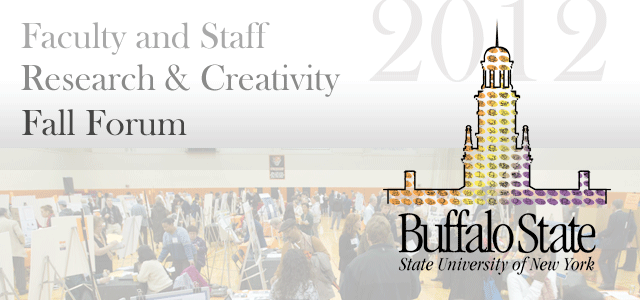
Event Title
Academic Rigor from the Student Point of View
Start Date
25-10-2012 11:00 AM
Description
The National Survey of Student Engagement (NSSE) draws on student feedback to gauge the level of academic challenge at particular institutions (Kuh, 2009). Our campus\'s NSSE results led to an institutional mandate to increase the level of academic rigor. Inspired by attempts to understand the implications of NSSE data on other campuses (Payne et. al., 2005), a cross-disciplinary research group developed a multidimensional model of academic rigor based on findings from faculty focus groups, a campus wide survey of faculty, and an extensive literature review. In this previous work, we found that challenging students requires attending to a number of overlapping categories, including active engagement (Finkel 2000; Light 2001; Graham & Essex 2001; Bain 2004), meaningful content, (Parkes 2001; Jensen 2005), higher-order thinking (Trigwell & Prosser 1991; Braxton 1993; Norvall et al. 1996; Nosich 2009), and appropriate expectations (Exley 2002).These dimensions overlap and a context (e.g., assignment, course, or course of study) might be considered rigorous or challenging along some dimensions and not others. The current study is designed to elicit the student perspective. It draws on both a campus-wide survey of students and a series of focus group interviews. Our aims are to learn about: (1) the attributes of academic rigor and the elements or methods that promote it; (2) the advantages and disadvantages of being in an academically challenging class ; (3)whether students value academic rigor, and (4) student suggestions to enhance academic rigor on an institutional basis. Student voices allow us to further empower faculty and students with resources to raise the level of academic rigor.
Academic Rigor from the Student Point of View
The National Survey of Student Engagement (NSSE) draws on student feedback to gauge the level of academic challenge at particular institutions (Kuh, 2009). Our campus\'s NSSE results led to an institutional mandate to increase the level of academic rigor. Inspired by attempts to understand the implications of NSSE data on other campuses (Payne et. al., 2005), a cross-disciplinary research group developed a multidimensional model of academic rigor based on findings from faculty focus groups, a campus wide survey of faculty, and an extensive literature review. In this previous work, we found that challenging students requires attending to a number of overlapping categories, including active engagement (Finkel 2000; Light 2001; Graham & Essex 2001; Bain 2004), meaningful content, (Parkes 2001; Jensen 2005), higher-order thinking (Trigwell & Prosser 1991; Braxton 1993; Norvall et al. 1996; Nosich 2009), and appropriate expectations (Exley 2002).These dimensions overlap and a context (e.g., assignment, course, or course of study) might be considered rigorous or challenging along some dimensions and not others. The current study is designed to elicit the student perspective. It draws on both a campus-wide survey of students and a series of focus group interviews. Our aims are to learn about: (1) the attributes of academic rigor and the elements or methods that promote it; (2) the advantages and disadvantages of being in an academically challenging class ; (3)whether students value academic rigor, and (4) student suggestions to enhance academic rigor on an institutional basis. Student voices allow us to further empower faculty and students with resources to raise the level of academic rigor.

